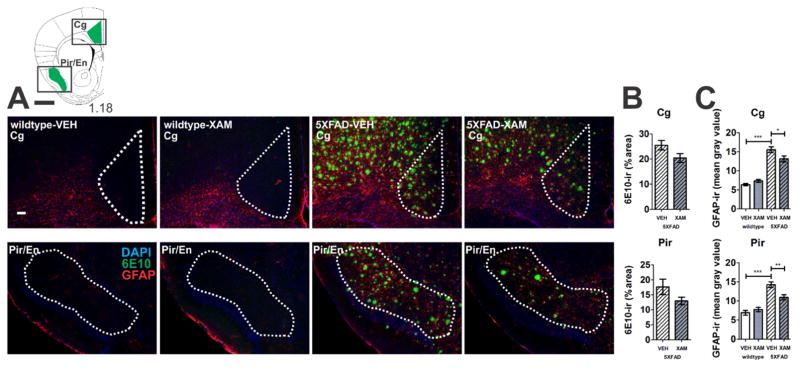Fig. 6.
Xamoterol reduces astrocyte (GFAP) gliosis in the vicinity of amyloid beta (6E10) immunoreactivity (-ir). Chronic dosing with the selective partial ADRB1 agonist, xamoterol, attenuated GFAP-ir in the cingulate (Cg) and piriform/endopiriform (Pir/En) cortices in 5XFAD transgenic mice. A) Atlas plates (top left) indicate one of multiple levels from which the regions of interest (green) were selected for analyses [1]. Black boxes indicate image capture frame. Numbers below atlas plates indicate mm bregma; black scale bar, 1 mm. Photomicrographs (5X magnification) illustrate representative immunostaining (DAPI, blue; 6E10, green; GFAP, red) from each region of interest in wildtype and 5XFAD vehicle- (VEH) and xamoterol-treated (XAM) mice, white scale bar, 100 μm. Dashed white lines indicate region of quantification. B) Quantitative immunohistochemistry revealed non-significant trends for decreases in 6E10-ir (% area) in Cg and Pir/En. C) Increases in GFAP-ir (mean intensity) were detected in both Cg and Pir/En in VEH-treated 5XFAD transgenic mice relative to VEH-treated wildtype littermates. These increases in astrogliosis were attenuated in both regions in transgenic mice chronically dosed with XAM. Sample size, n=4–5 per group. *p < .05, **p < .01, ***p < .001, Bonferroni’s test for multiple comparisons following one-way ANOVA.

